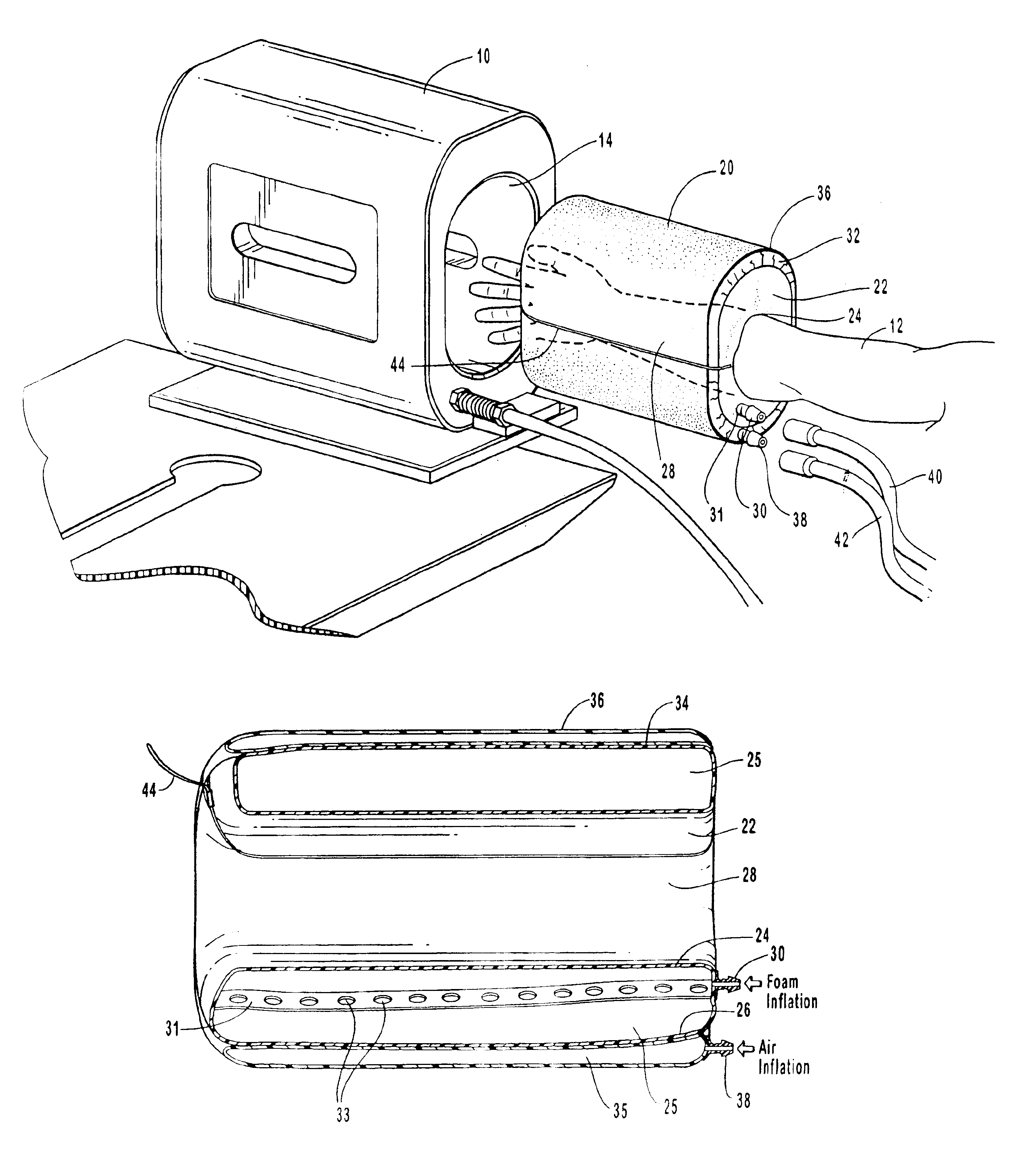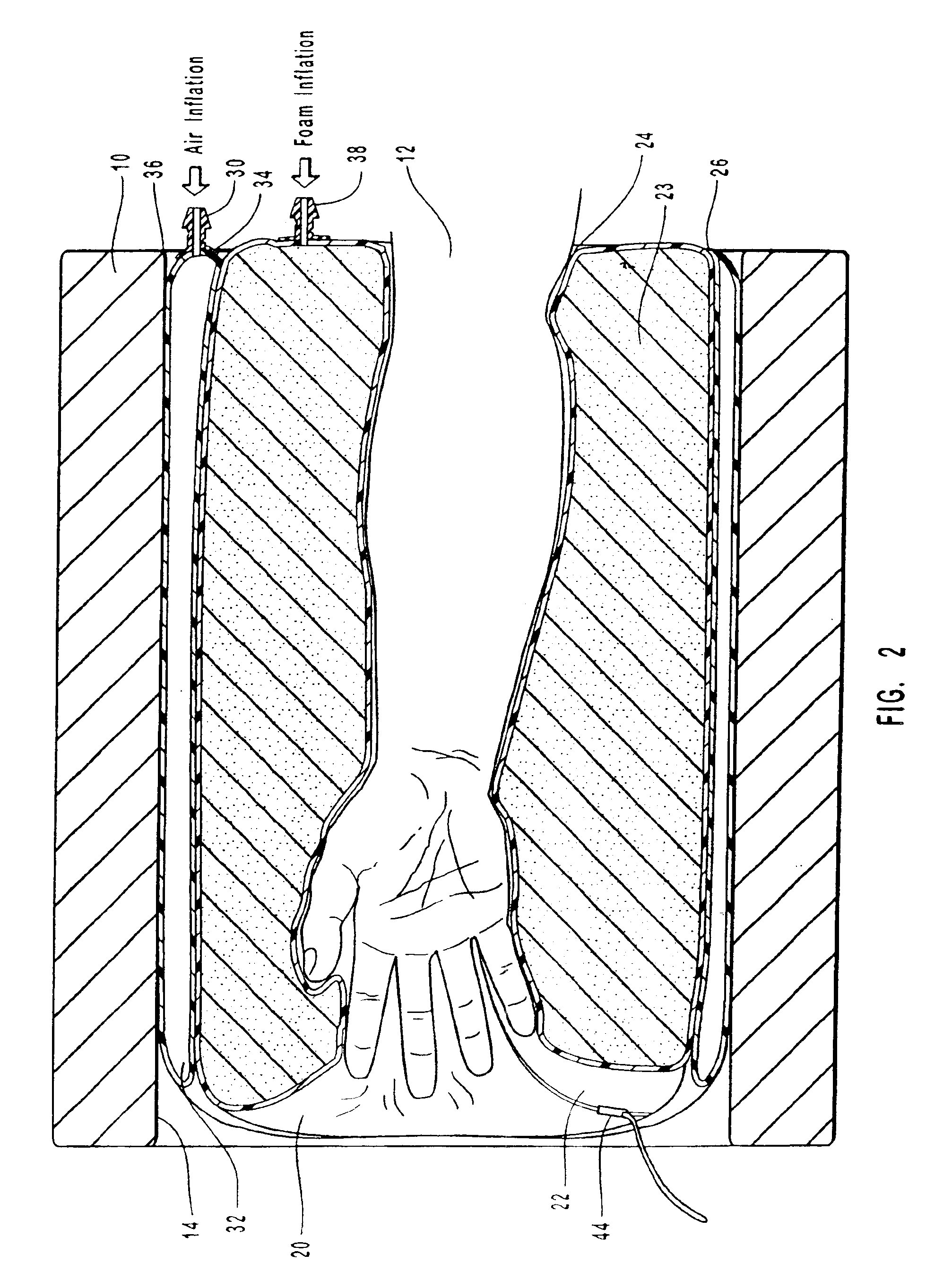Restraining apparatus and method for use in imaging procedures
a technology for restraining apparatus and imaging procedures, applied in the direction of patient positioning for diagnostics, instruments, applications, etc., can solve the problems of constant motion artifacts, inability to interpret, and constant patient motion, so as to reduce or preclude all micro and macro motion of the patient's head, the effect of reducing the level of restrain
- Summary
- Abstract
- Description
- Claims
- Application Information
AI Technical Summary
Benefits of technology
Problems solved by technology
Method used
Image
Examples
Embodiment Construction
[0040]It will be readily understood that the components of the embodiments, as generally illustrated in the Figures and described herein, could be arranged and designed in a wide variety of different configurations. Thus, the following more detailed description of the embodiments of the apparatus and methods disclosed, as represented in FIGS. 1 through 12, is not intended to limit the scope of the invention, as claimed, but is merely representative of the presently preferred embodiments.
[0041]The presently preferred embodiments will be best understood by reference to the Figures, wherein like parts are designated by like numerals throughout. While the preferred embodiments pertain to MRI and to CT scanners, and to other imaging devices, the following detailed description will focus on use with an MRI. It will be appreciated that MRI and CT scanners, and other imaging devices for use with different body parts are within the scope of the present invention. For ease of the present disc...
PUM
 Login to View More
Login to View More Abstract
Description
Claims
Application Information
 Login to View More
Login to View More - R&D
- Intellectual Property
- Life Sciences
- Materials
- Tech Scout
- Unparalleled Data Quality
- Higher Quality Content
- 60% Fewer Hallucinations
Browse by: Latest US Patents, China's latest patents, Technical Efficacy Thesaurus, Application Domain, Technology Topic, Popular Technical Reports.
© 2025 PatSnap. All rights reserved.Legal|Privacy policy|Modern Slavery Act Transparency Statement|Sitemap|About US| Contact US: help@patsnap.com



